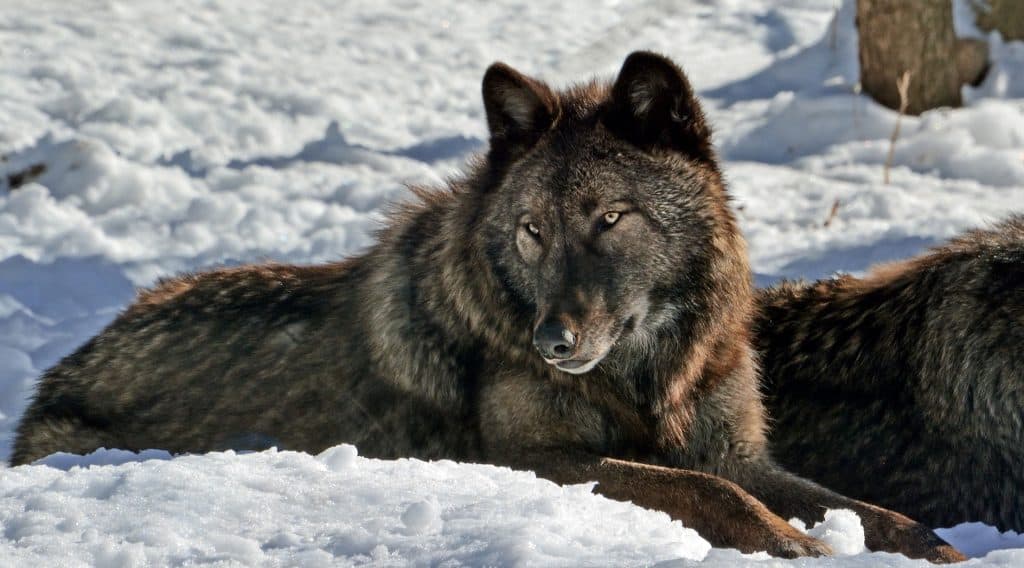
Gray wolves in the lower 48 states will lose protection under the Endangered Species Act if the U.S. Fish and Wildlife Service goes through with a plan announced yesterday. The decision must also survive court challenges.
While the number of wolves in Minnesota has grown significantly in recent decades, and exceeds the recovery goal, wolf advocates point out the animals are still absent in much of their original range.
The Interior Department says wolf recovery has been completed, and the canines no longer deserving of federal protection. The move would let states decide how to manage the animals.
“Recovery of the gray wolf under the Endangered Species Act is one of our nation’s great conservation successes, with the wolf joining other cherished species, such as the bald eagle, that have been brought back from the brink,” U.S. Fish and Wildlife Service spokesman Gavin Shire told the Associated Press.
Acting Interior Secretary David Bernhardt made the announcement yesterday at a wildlife convention in Denver. Bernhardt is a former oil-industry lobbyist, who also served in the Interior Department during the George W. Bush administration.
His short tenure working for President Trump has already been marked by allegations of corruption. Since he joined the agency, CNN recently reported that the Department of Interior has “made at least 15 policy changes or decisions specifically requested by his former clients that benefited them.”
Bernhardt served as deputy to former secretary Ryan Zinke, who resigned last year. Bernhardt is still waiting for Senate confirmation.
Removing species from federal protection can have big benefits for extractive industries, making it easier for industries like logging and mining to access federal lands.
Court fight coming
While delisting wolves could mean the resumption of wolf hunting in Minnesota and other states, it would also erase habitat protections for the animal. That includes most of the Superior National Forest.
“Wolves die in many ways when they lose federal protections, and this harms the long-term survival of wolves for future generations,” said Maureen Hackett, founder and president of Howling For Wolves, a Minnesota-based wolf advocacy organization.
Other advocates pointed out that wolves play an important role in the ecosystem, and their absence has negative impacts on people.
“What do chronic wasting disease (zombie deer) and Lyme disease have in common? Missing predators,” tweeted Leda Huta, Executive Director of the Endangered Species Coalition. “Healthy habitats need keystone wolves & other species. Lifting gray wolf endangered species protections will hurt our country.”
Wildlife advocates promised to fight the delisting, continuing a long legal battle. Wolves were put on the Endangered Species List in 1974. They were removed in 2011, and then returned to protected status in 2014 by a federal court order.
“The courts have repeatedly slammed the Fish and Wildlife Service for prematurely removing wolf protections, but the agency has now come back with its most egregious scheme yet,” said Collette Adkins of the Center for Biological Diversity. “Once again, we’ll take it to the courts and do everything we can to stop this illegal effort to kill wolf protections.”
The latest estimate of the wolf population in Minnesota is about 2,600 animals, according to the Department of Natural Resources. Some wolf advocates have criticized the agency’s survey methods, saying it may overestimate numbers.
“The current method of estimating wolves is not only inaccurate, it tells us very little about how our wolves are doing and their future potential to exist in their changing habitat,” Hackett said in a statement last year.
When wolves were removed from the list between 2011 and 2014, Minnesota opened two hunting seasons, with 413 killed in 2012, and 238 harvested in 2013.

